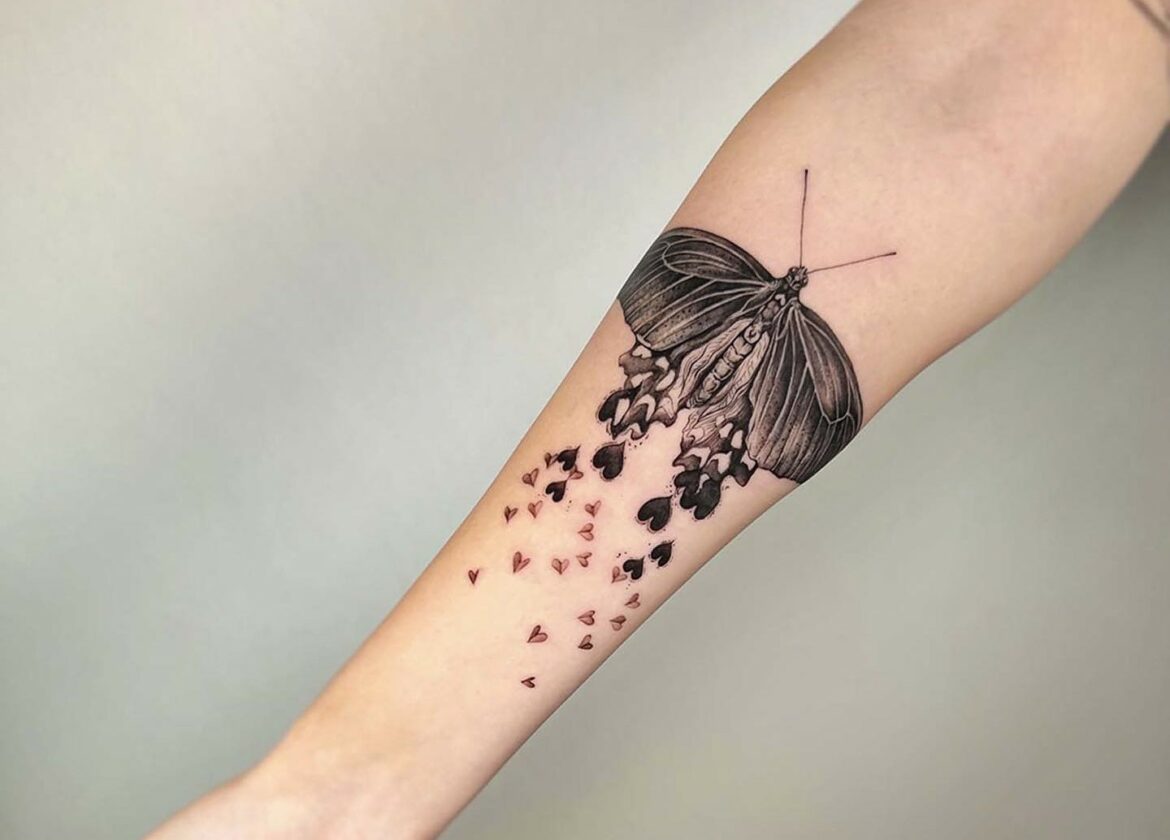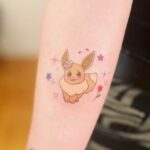Table of Contents
I know, I know, it sounds like we’re shopping for a new pair of jeans. But trust me, folks, when it comes to tattoos, size does matter. From your itty-bitty finger doodles to full-fledged back murals, sizing can make or break the tattoo game. In this post, we’re going to dive into the sometimes-confusing world of tattoo sizes, dimensions, and proportions. I’ll share my insider tips and tricks, cultivated from my years of painting bodies with indelible tales. We’ll explore how to determine the right size for your tattoo, the nitty-gritty of scale and placement, and the relationship between tattoo size and its ultimate aesthetic impact.

But, you know me. I won’t be leaving you with just charts, numbers, and jargon. Nope, not my style! Prepare yourself for a roller-coaster ride through dazzling visuals, witty anecdotes, and valuable insights that will illuminate the path to your next tattoo decision.
So, grab a coffee, settle down, and prepare for an enlightening journey into the world of tattoo size mastery. You’re not just a reader here, you’re a fellow adventurer on this crazy canvas of inked artistry!
Let’s dive into the deep end of tattoo sizing, and emerge on the other side, more informed, more prepared, and more excited about your next piece of body art.
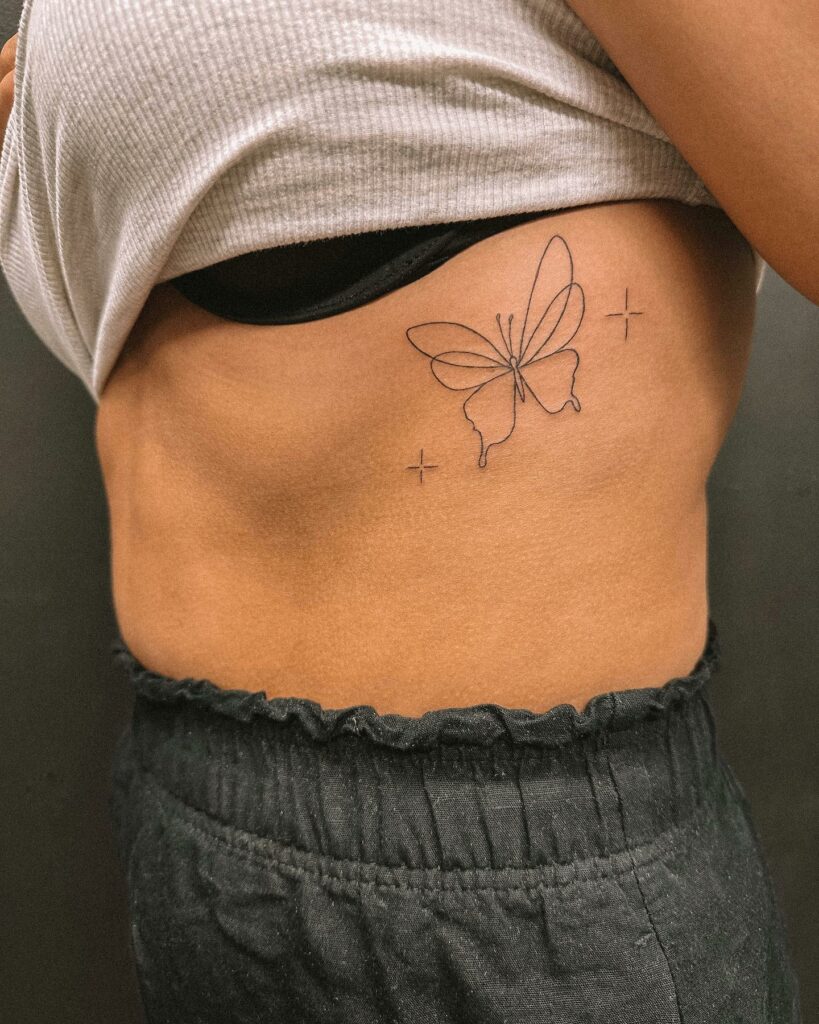
Why Size Matters
As your tattoo guide, let me tell you, getting the size wrong is like wearing a stunning dress two sizes too small—it just doesn’t work, no matter how lovely it might be. Get it right, and you’ve got a masterpiece you can proudly wear for life. Get it wrong, and you might end up with a piece that leaves you feeling less than thrilled every time you glance at it.
Design and Detail
Recall that time when I tried to fit an elaborate Celtic knot into a space the size of a quarter on my ankle? Yeah, not my proudest moment. Intricate designs need room to breathe. Cramming too many details into a tiny tattoo might result in a smudgy blob rather than a distinct masterpiece. On the flip side, a simple design can look charming when small—like that tiny ladybug I once did on a client’s earlobe. Just adorable!
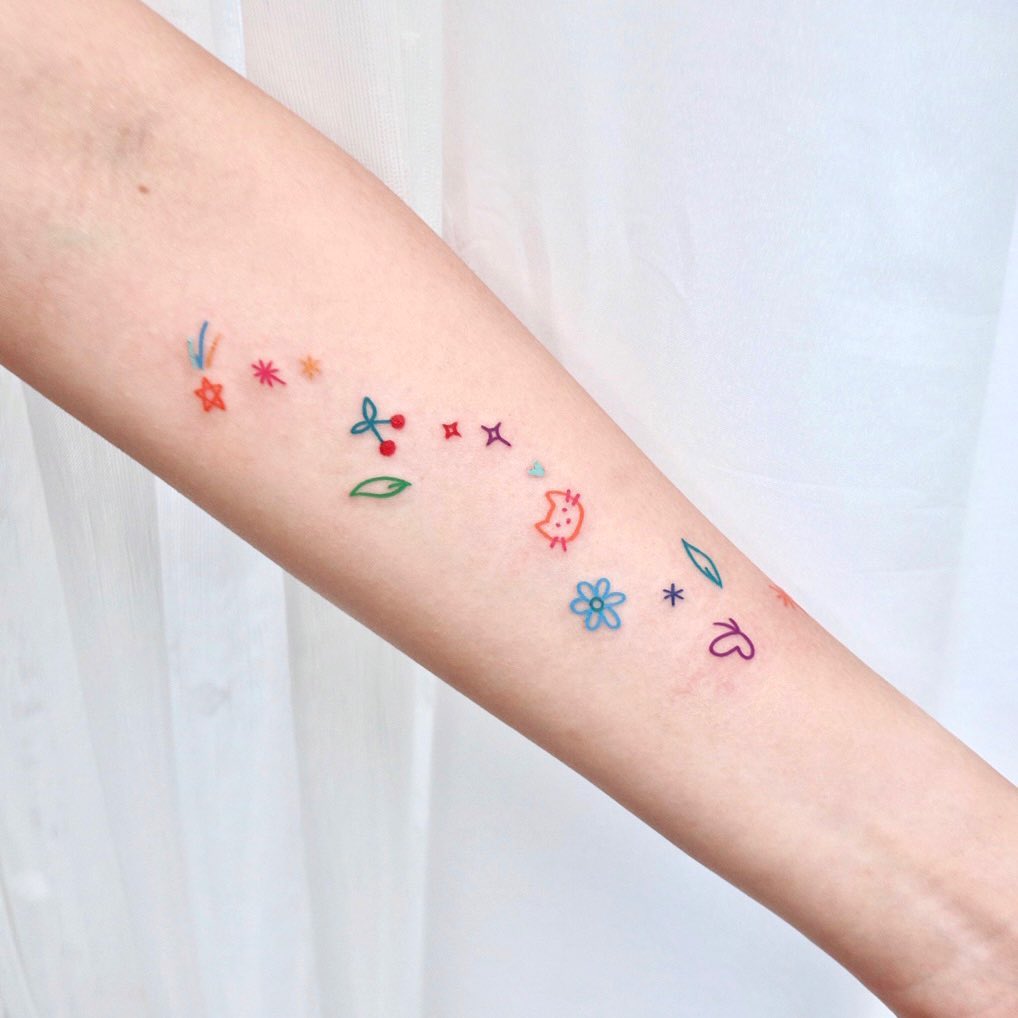
A Matter of Pain and Time
Not to scare you off, but let’s face facts—tattoos do come with a bit of sting. Smaller tattoos, though, offer less discomfort and quicker healing times. Think of it as an express ticket to your summer beach party! But if you’re all set for a grand piece like a full sleeve, prepare yourself for a bit more of a ride (and some downtime for healing).
Placement and Size
The body is your canvas, but not all areas suit all designs. You might love the idea of an intricate dragon tattoo, but your wrist probably isn’t the right spot for it. Consider the available real estate before settling on a design. And if you’re set on a specific body part—like a full chest piece—ensure you’re looking at designs that can cover that area effectively.
How to Measure Your Tattoo

So, how do we measure tattoos? Picture it as your high school geometry lesson but way cooler. We’re talking square inches here, folks. Multiply the height and width of your design at its longest points, and voila! You’ve got your tattoo size. From petite 2 square inch pieces to grand 40 square inch back tattoos, understanding size helps you envision your design before the ink even hits your skin.
Price of Different Sizes
Okay, so we can’t ignore the wallet factor. As with most art, the bigger the piece, the bigger the price tag. But remember, a good tattoo isn’t a cheap impulse buy—it’s an investment.
The price of your tattoo will depend on a range of factors, including the size, detail level, artist’s experience, and geographical location. As a general rule, you can expect to shell out anywhere from $30 for a teeny tiny tattoo, all the way to thousands for large, intricate designs by top-tier artists. And don’t forget that tipping your artist is standard etiquette!
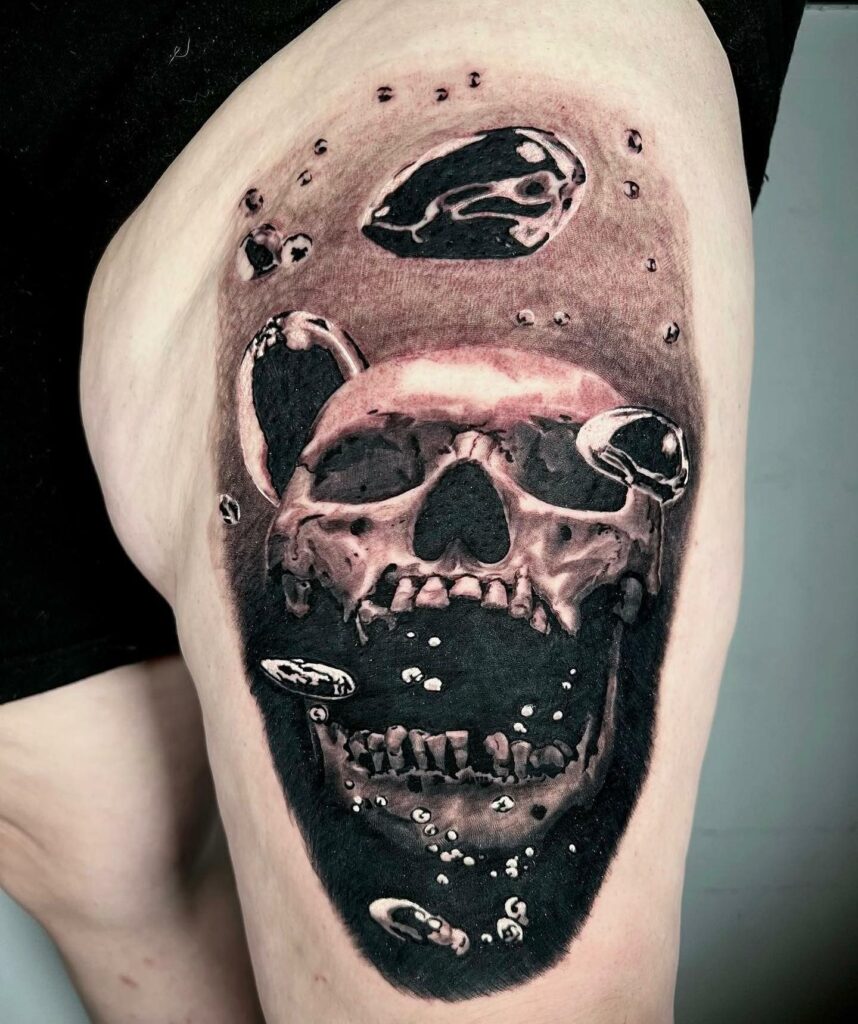
But here’s a tip from your tattoo-savvy friend—don’t let price be the deciding factor in your tattoo size. If you’ve got your heart set on a medium piece but your budget is saying otherwise, hold off for a bit. Wait until you can afford the size you truly want. Trust me, it’s worth the wait.
Common Sizing Mistakes
In my years of tattooing, I’ve seen my share of sizing errors. We often underestimate the size we want, especially when we’re new to the game. It’s easy to imagine you’ll want something small and unobtrusive. But let me tell you, once you fall in love with your tattoo, you’ll wish it were bigger and more visible.
On the flip side, some folks get overzealous and ask for larger-than-life tattoos. Here’s the problem: scale up a design too much, and it can lose its charm and balance. So, take your artist’s advice into account when deciding on the size. We’ve got your back, after all—we want your tattoo to look its absolute best, just as much as you do!
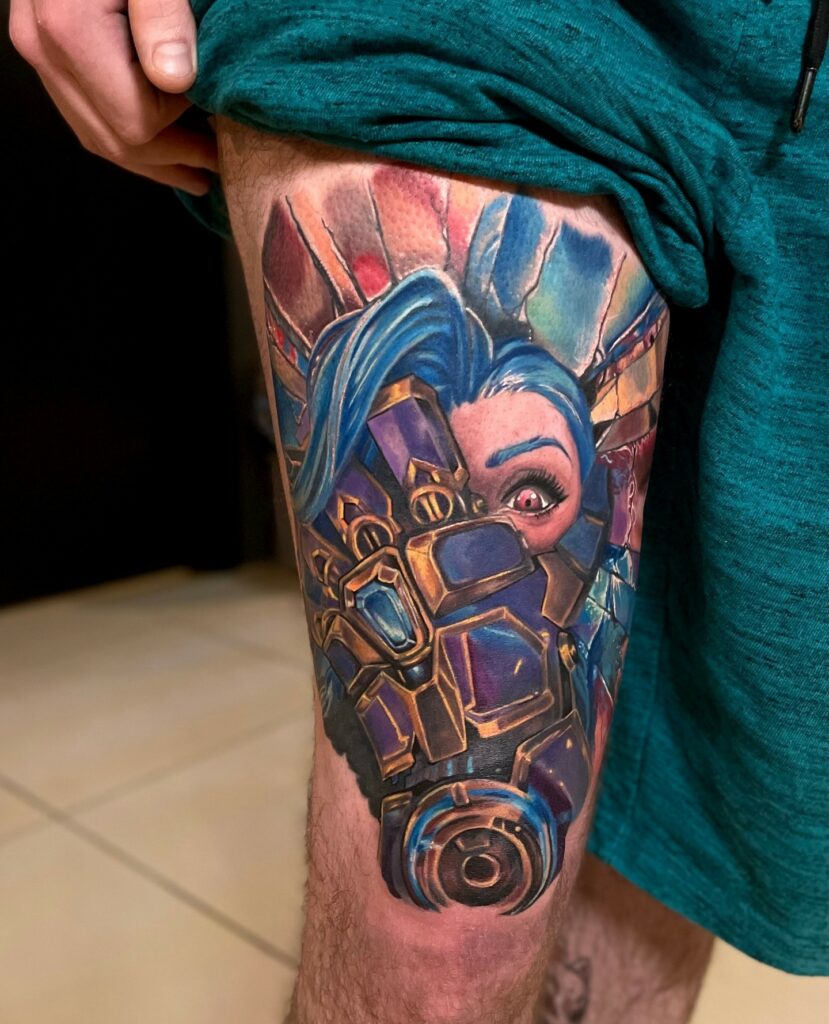
Tips On Designs & Placement
Choosing a tattoo design that suits a specific part of the body depends on several factors including the size, shape, and level of detail in the design, as well as the natural curves and muscle definition of the body part. Here are a few examples of designs that often work well on certain parts of the body:
- Arms and Legs (especially biceps, forearms, and thighs): These are great for medium-sized pieces and longer designs, such as text, tribal designs, or Japanese-style “sleeve” tattoos. The arms and legs are often chosen for their visibility and the relative ease of tattooing.
- Back: The back offers the largest canvas and is perfect for large and complex designs like intricate tribal or biomechanical pieces, detailed scenes, or designs like phoenix, dragons, or large floral designs.
- Chest: The chest area works well for symmetrical designs or designs that can be split down the middle. For men, traditional designs such as eagles, skulls, and quotes are popular, while women might choose designs like delicate script, birds, or flowers that sit well on one side of the chest.
- Ribs: Due to the long, narrow space, designs like script or long-stemmed flowers work well here. However, the rib area can be particularly painful to tattoo.
- Wrist: Small, simple designs are best for the wrist, such as symbols, initials, small animals, or minimalistic floral designs. Bracelet or band designs can also work well here.
- Ankle and Foot: Delicate, simple designs work well in these areas. Common choices are anklet designs, small birds, flowers, or celestial symbols like stars and moons.
- Fingers: Small symbols, letters, or numbers are often chosen for fingers due to the limited space. It’s also a popular spot for small, meaningful tattoos, like wedding band designs.
Remember, the choice of design and location is deeply personal and should be something that you’re comfortable with, as a tattoo is a long-term commitment.
How Size Of A Tattoo Effect Pain & Healing Time
Pain Level: Pain is subjective and can vary greatly from person to person. Generally speaking, larger tattoos mean more time under the needle, which could potentially lead to more discomfort. Certain locations on the body can also be more sensitive than others, especially over bony areas or areas with less fat or muscle. The pain can also be affected by your overall health, hydration, stress levels, and even your mindset going into the tattoo session.
Healing Time: The healing time for a tattoo is typically proportionate to its size and complexity. A small, simple tattoo might heal completely within two weeks, while a larger, more detailed piece might require a month or more. The healing process also depends on how well you care for your tattoo after the session. Following your artist’s aftercare instructions can help speed up the healing process and ensure your tattoo looks its best.
In both cases, your tattoo artist should be able to provide more specific information based on their experience and understanding of your unique situation. Always communicate with your tattoo artist about any concerns you might have. They can help set expectations and provide recommendations to manage pain and promote healing.
Approximate Cost And Size Ratio
The cost of a tattoo can vary greatly depending on a variety of factors including the artist’s experience and reputation, the geographic location of the studio, the complexity of the design, the size, and the time required to complete the work.
As a general guide, you could consider the following:
- Small tattoos (simple, palm-sized designs): These could cost anywhere from $50 to $200.
- Medium-sized tattoos (more complex, about the size of a hand): You might be looking at a range of $200 to $400.
- Large tattoos (full sleeve or a large back piece): These typically start at around $500 and can go up to several thousand dollars, depending on the level of detail and number of sessions required.
- Custom artwork: If you want a design that’s uniquely yours, the artist will need to spend additional time creating that design. This can add to the cost as well.
Remember, these are just rough estimates and actual prices can vary greatly. Some artists charge by the hour (with rates usually ranging from $50 to $200 per hour), while others charge a flat fee for the entire piece. The most important thing is to discuss pricing with your artist before you begin.
Keep in mind that a higher price often reflects an artist’s expertise, skill, and experience. A cheaper tattoo might not always be the best route, especially if it means compromising on the quality of the work. After all, a tattoo is a lifelong investment in your body. You’ll want to make sure it’s done right!
Conclusion
So, ink seekers, that’s our journey through the realm of tattoo sizing. Remember, size isn’t just a number—it’s a crucial factor that impacts design, pain, healing time, placement, price, and most importantly, your satisfaction with your body art. But don’t be daunted, instead, be prepared! Armed with the right knowledge, you’re set to make a decision that’s right for you. The beauty of tattoos is they’re as unique as we are, so ensure the size of your piece reflects your personal style and comfort level. Keep in mind that your tattoo artist is your ally in this journey. Don’t hesitate to discuss your thoughts, doubts, and aspirations. Together, you’ll be able to create a masterpiece that you’ll be proud to wear for a lifetime. Here’s to you, future canvas warriors—may your ink adventures be bold, beautiful, and perfectly sized!
